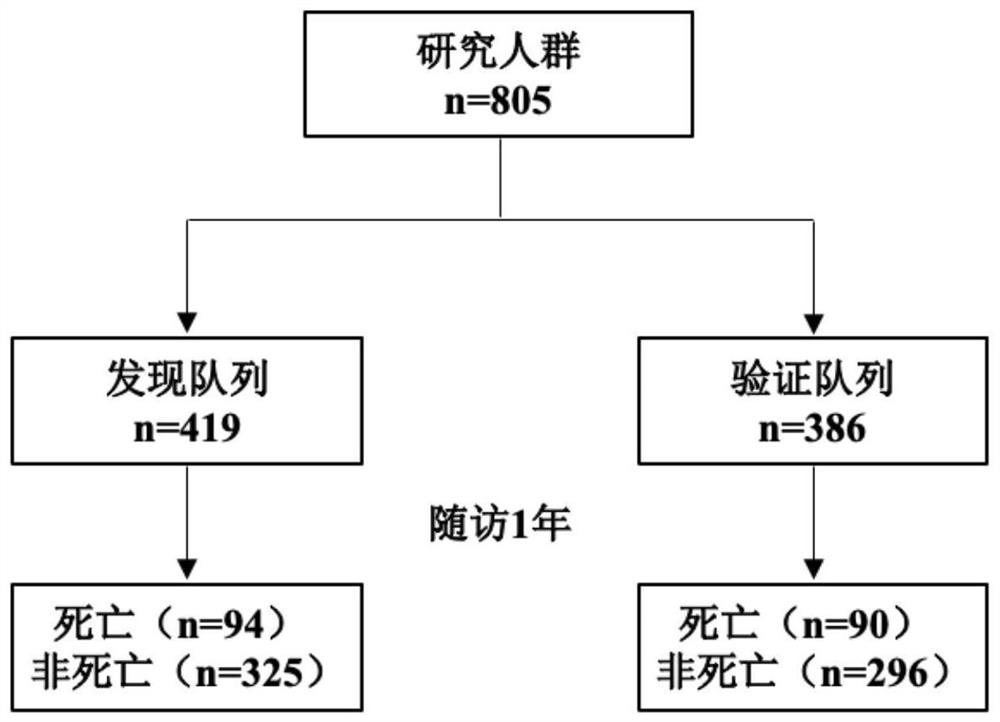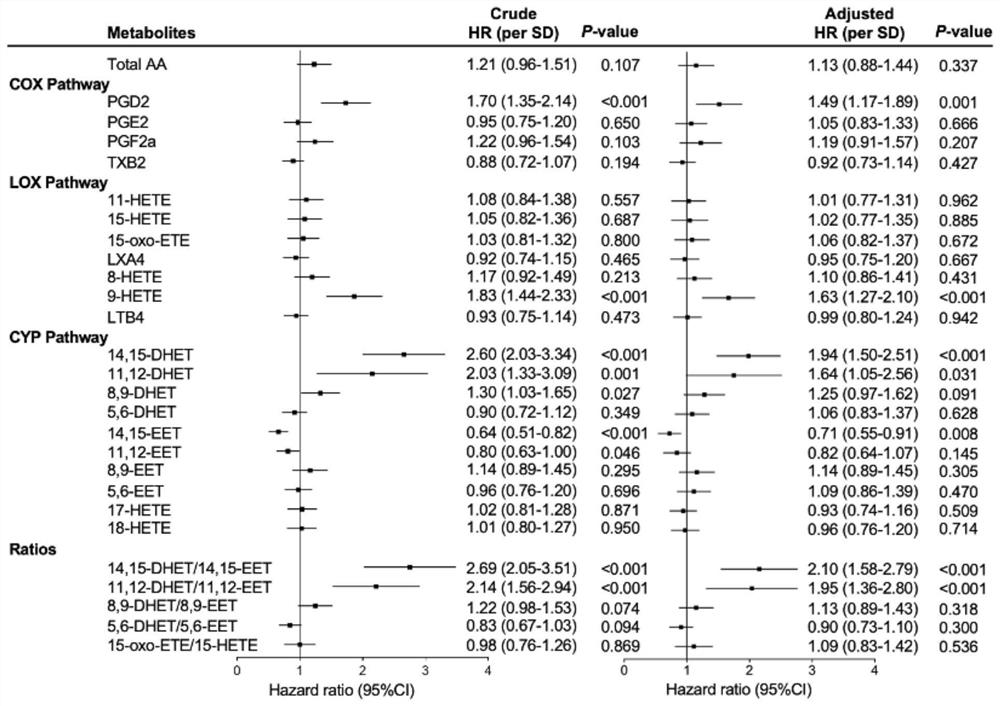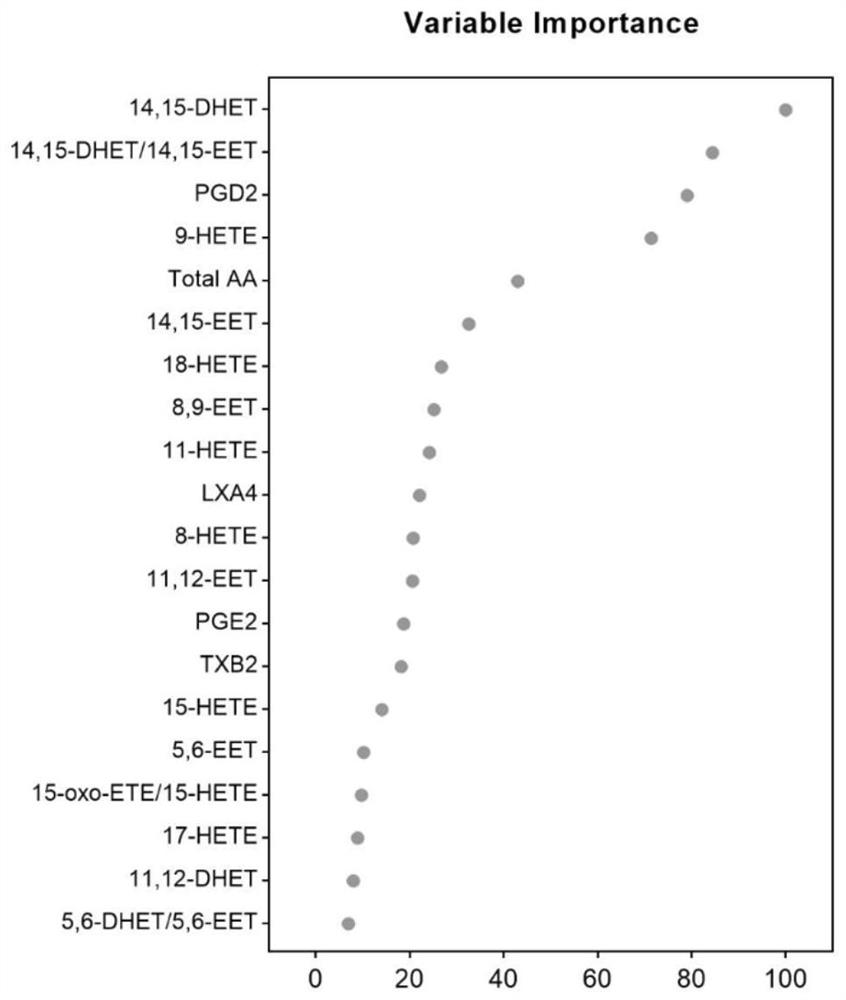Method for predicting prognosis of heart failure patient by using data of arachidonic acid metabolome in serum
An arachidonic acid, patient technology, applied in the medical field, can solve problems such as beneficial treatment of high-risk patients
- Summary
- Abstract
- Description
- Claims
- Application Information
AI Technical Summary
Problems solved by technology
Method used
Image
Examples
Embodiment 1
[0035] Example 1. Screening of enrolled patients, processing of serum samples and detection of arachidonic acid metabolites
[0036] Continuously admitted heart failure patients (n=805) were selected for clinical registration research (ClinicalTrials.govIdentifier: NCT04108182), divided into discovery cohort (n=419) and verification cohort (n=386), (all participants provided written Informed consent. This study was approved by the Ethics Committee of Beijing Anzhen Hospital, Ethics Number: KS2019017) to detect the levels of AA metabolites in serum of patients admitted to the hospital, and each patient was followed up for a period of 1 year. Research Ending event is 1 year full due to death . Outcome events occurred in 94 and 90 patients in the discovery and validation cohorts, respectively. For the flow chart of patient enrollment and follow-up, see figure 1 .
[0037] Serum AA detection experimental steps of enrolled patients:
[0038] 1. Sample Preparation
[0039] ...
Embodiment 2
[0044] Example 2, analysis of serum AA metabolites in patients with heart failure
[0045] 1. Univariate and multivariate COX regression analysis
[0046] According to the follow-up results, univariate and multivariate COX regression analyzes found that the cohort AA metabolite levels had a predictive value for 1-year all-cause mortality in patients with heart failure. like figure 2 The results showed that some AA metabolites and metabolite ratios had significant predictive value for 1-year all-cause mortality in patients with heart failure.
[0047] 2. Use 4 arachidonic acid metabolites or ratios to construct a scoring model and verify it
[0048] The mass spectrometry detection patterns of typical patient serum samples [all-cause death event patients (with outcome events) and event-free patients (without outcome events)] are as follows Figure 5 As shown, specifically: 14,15-DHET test results see Figure 5 A. 14,15-EET test results see Figure 5 B, PGD2 test results se...
PUM
 Login to View More
Login to View More Abstract
Description
Claims
Application Information
 Login to View More
Login to View More - R&D
- Intellectual Property
- Life Sciences
- Materials
- Tech Scout
- Unparalleled Data Quality
- Higher Quality Content
- 60% Fewer Hallucinations
Browse by: Latest US Patents, China's latest patents, Technical Efficacy Thesaurus, Application Domain, Technology Topic, Popular Technical Reports.
© 2025 PatSnap. All rights reserved.Legal|Privacy policy|Modern Slavery Act Transparency Statement|Sitemap|About US| Contact US: help@patsnap.com



